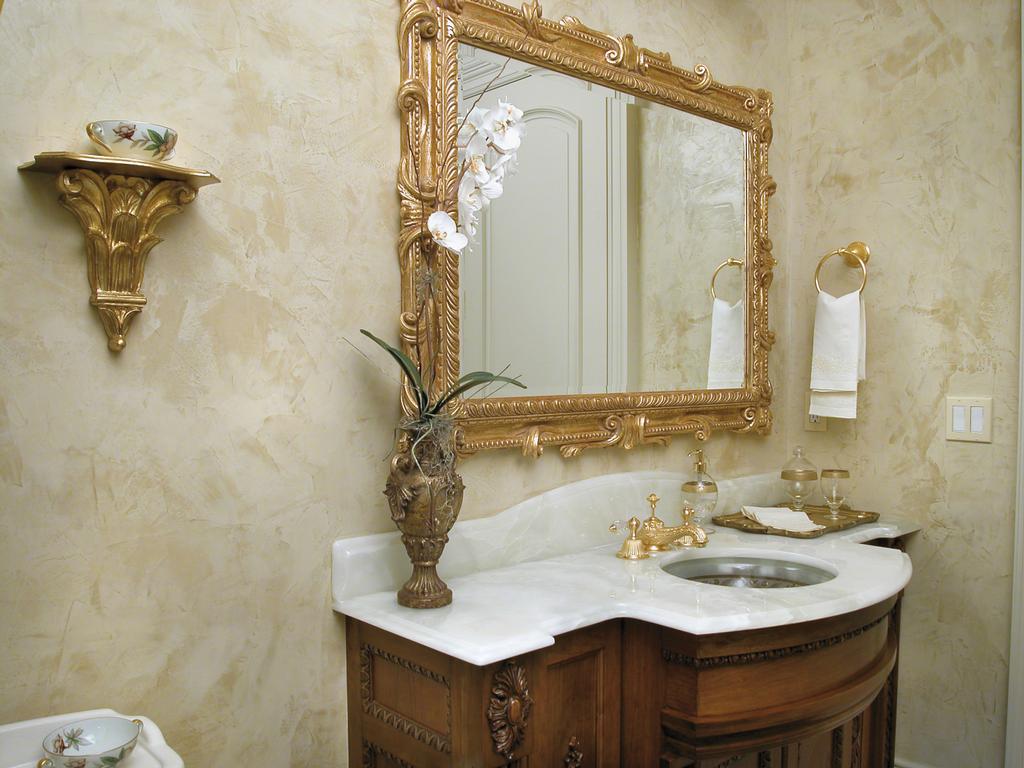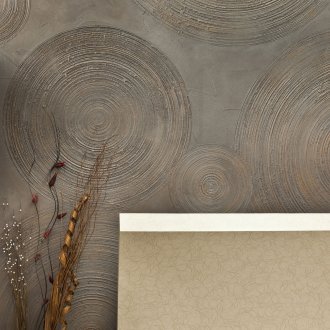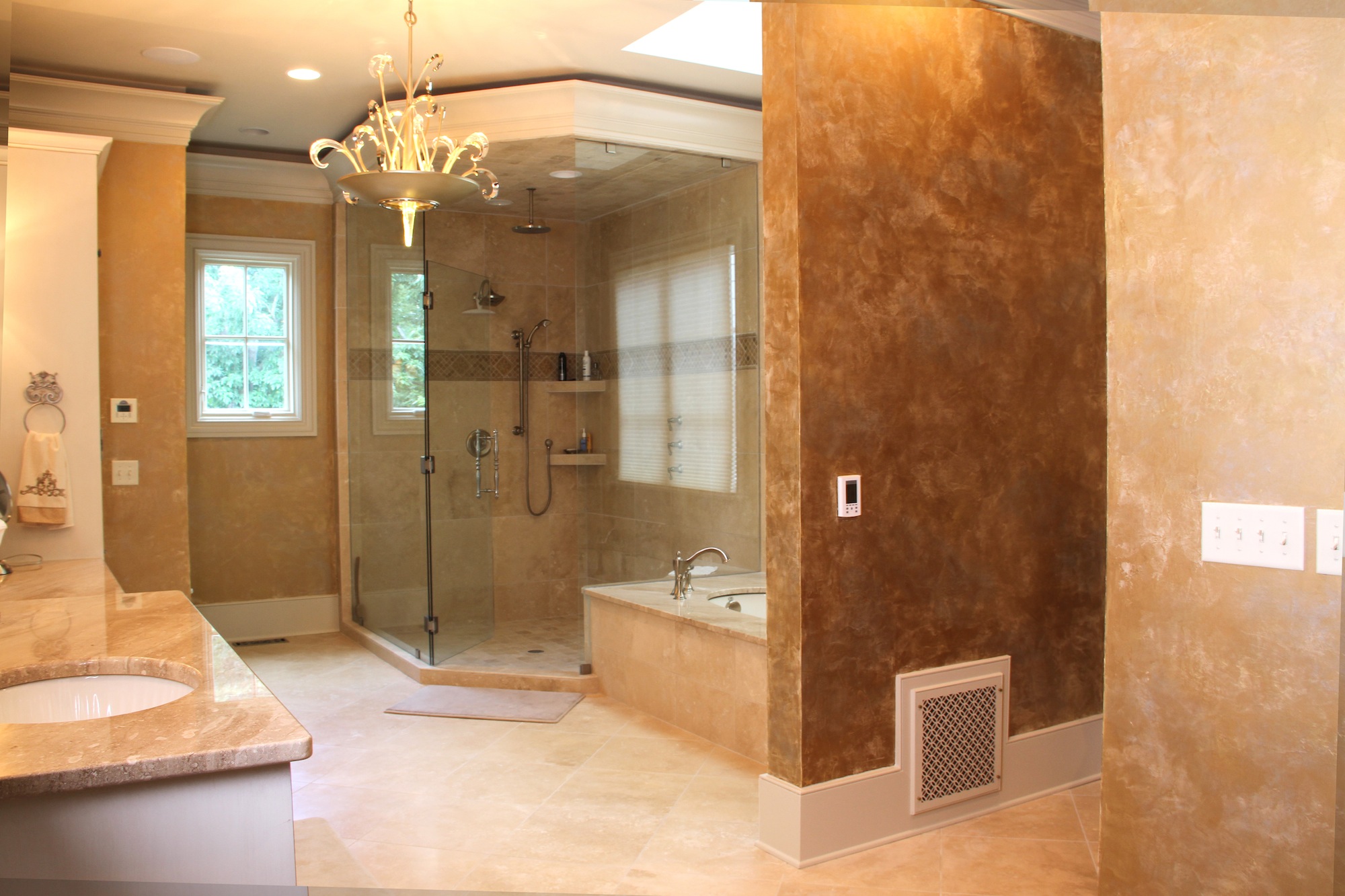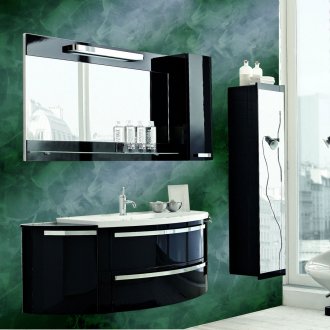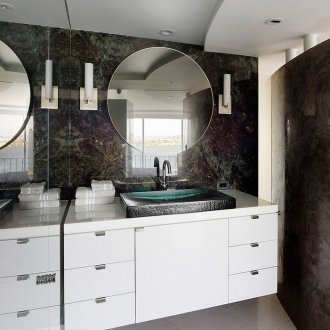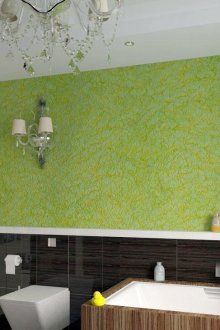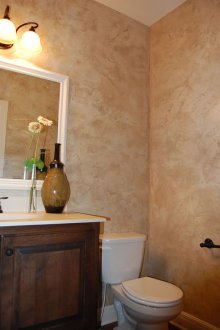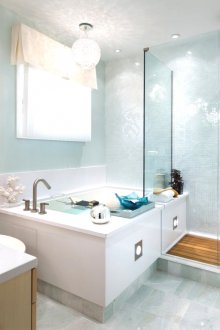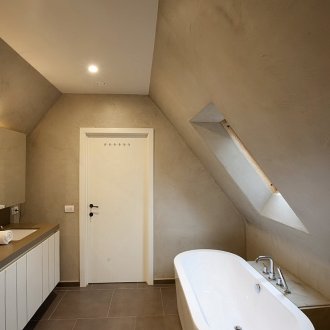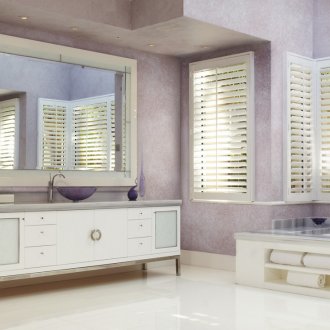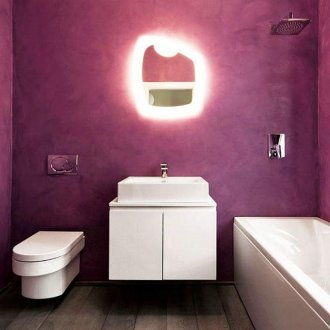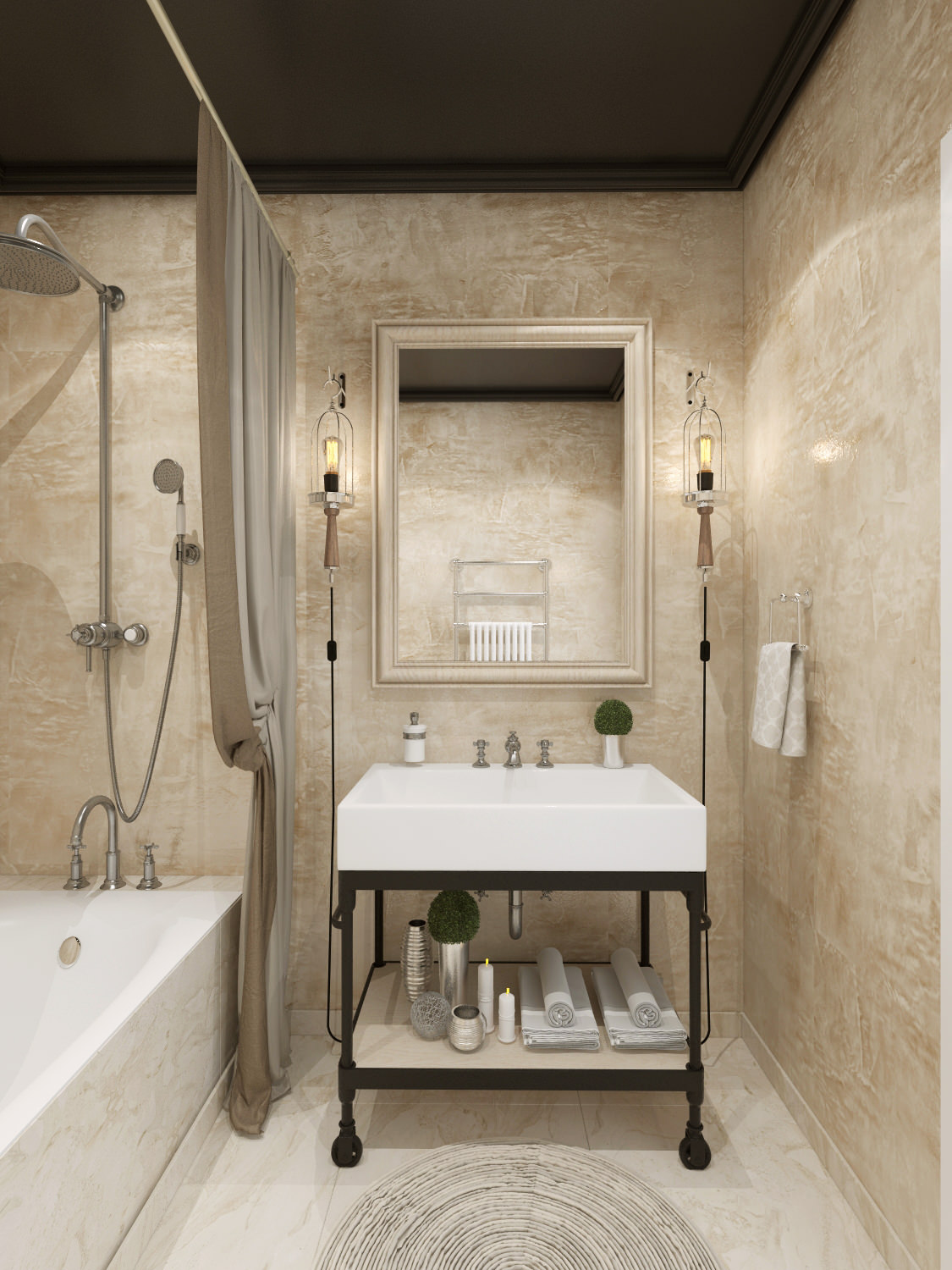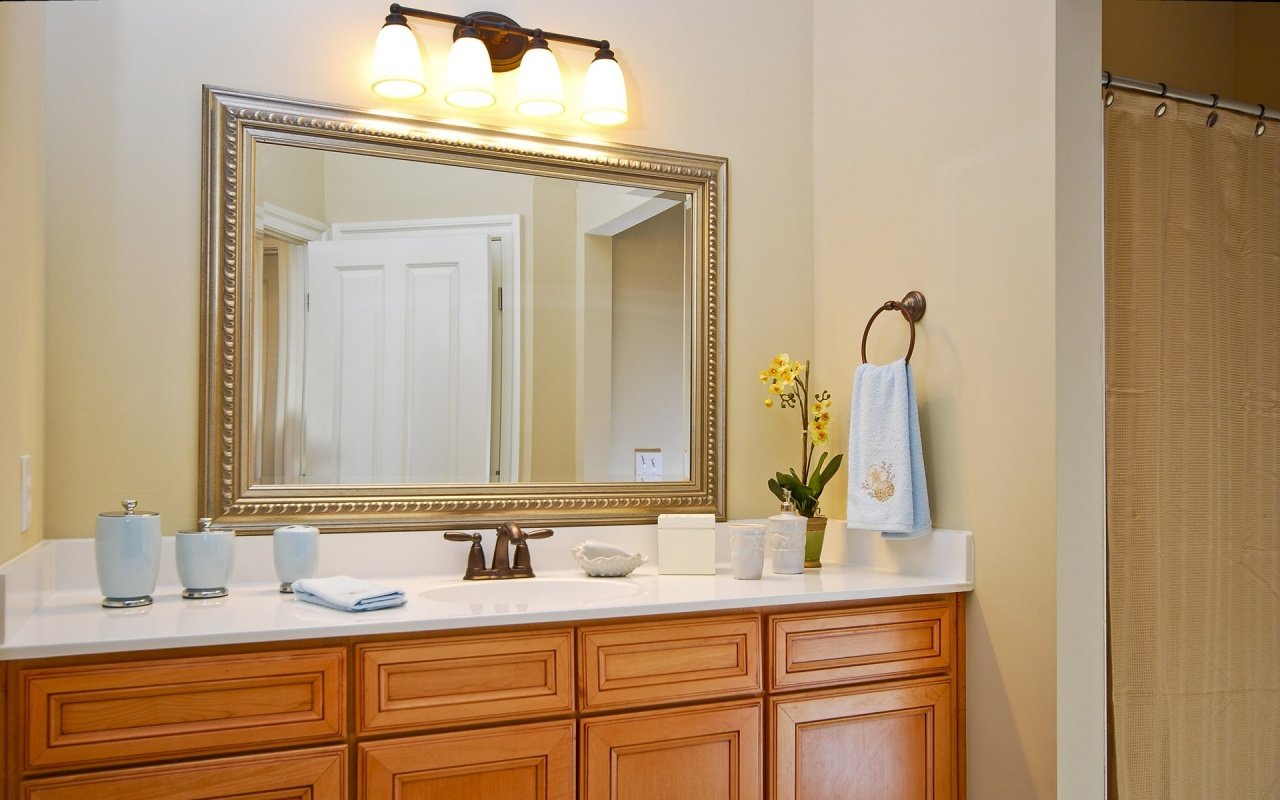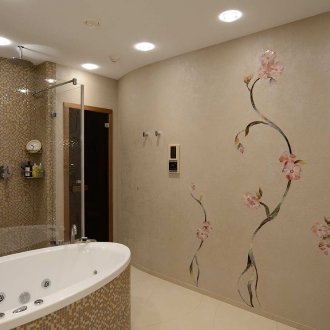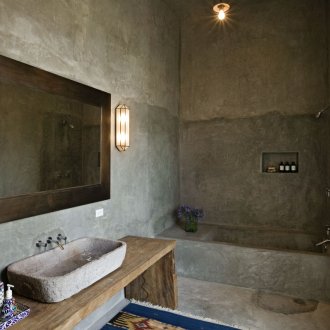Decorative plaster in the bathroom (19 photos)
Content
Every year there are more and more new ways of decorating indoors. In this article we will consider another idea: decorative plaster in the bathroom. Until recently, the design of a bathroom using tiled walls was familiar to everyone. Time passes, and new, modern materials appear. What are the advantages, why decorative plaster in the bathroom is much better than the usual tile.
The advantages of decorative plaster in the interior design of the bathroom
When choosing a bathroom design, first of all, it should be borne in mind that this room will always be wet. Therefore, the material for the wall must be appropriate. So, why is the use of plaster better than tile, except that it is moisture resistant:
- High vapor permeability
- Unlike tiles, decorative plaster does not create favorable conditions for the development of the fungus, especially if it contains antifungal components
- Due to the absorption of excess moisture (finish features), the mirrors do not fog up, which is very convenient
- You can choose any color and texture
Features of using decorative plaster
Before applying the plaster, it is necessary to tightly engage in the preparation of the wall, otherwise there is a risk that the plaster will begin to peel off. In addition to unaesthetics, an unprepared wall threatens to turn into great inconvenience.
- If you come up with a design on the ceiling, but did not prepare the walls, the entire finish runs the risk of crumbling on your head
- It is only necessary to prepare the walls of the bathroom with sanitizing plaster to avoid the appearance of dangerous and ugly mold stains
- It will not work to create a design using preliminary plaster, it is intended only for preparing the wall
- The surface of the wall must be carefully leveled.
Why only sanitizing plaster
After drying, this type of plaster forms a kind of film on a surface that firmly touches the walls. Using sanitizing plaster will protect your walls from moisture, so your decorative surface will be sufficiently moisture resistant for use in the bathroom. This will help to preserve for a long time all subsequent design made by textured plaster. Using this solution will protect your walls from white spots on the surface that destroy building material. The external part of the coating, absorbing and giving away moisture, regulates the microclimate in the bathroom. Fortunately, despite all the nuances, the use of this plaster is quite simple. It can be applied to the walls yourself. Its main advantage is that such a decoration of the room, where the preliminary plaster is the basis, is even more durable than just tile.
Decorative plaster in the interior
The main advantage of competent wall preparation before applying a decorative coating is that it becomes possible to use any type of plaster. With prepared walls, any plaster will serve as moisture resistant.There are no restrictions in choosing the right material, but it’s worth understanding that there is a difference between the different types of finishing plaster.
- Smooth decorative plaster. If you want to make the design of the walls in the room more noble, for these purposes you can use smooth decorative plaster. This finish completely imitates natural stone, such as marble. You can diversify this design using stencils. It will also be interesting to decorate the ceiling with such a coating.
- Structural plasters. This common type of plaster creates ordered, textured reliefs. However, this plaster is not sufficiently moisture resistant. The lifespan of this type of finish is not too long, as with smooth surfaces. The reason for this is the remaining moisture in the troughs. The best use of such plaster in places where moisture accumulates least. For example, you can apply it to the ceiling. However, with all its disadvantages, thanks to this type of coating, the most interesting room designs are obtained. The most beautiful are those where a combination of two types of decorative coatings is found.
The choice of mixture for plaster deserves special attention
Many are advised to buy ready-made mixtures. You can do this if you have enough experience in wall decoration. If you are a beginner, then working with the finished mixture may take you too much time, because this composition can not be diluted or thickened to a convenient consistency. If you are going to work on your own, then you are better off with heterogeneous mixtures, since they are considered the most difficult to work with. It is better to entrust the decoration of the walls in the room with such stucco to professionals. Non-water based plasters are considered the best and most reliable option. Water compounds, although harmless, but such a mixture is not moisture resistant. After the walls have dried, it will need to be additionally covered with a wax composition.
Application Features
All types of coating have their own particularities of application, if you decide to decorate the ceiling in your bathroom, in addition to the walls, then you should know a few nuances. After all, the ceiling, as a rule, is one of the most problematic parts of the room.
The ceiling before coating must be completely clean and completely dry. And unlike the walls of the room, plaster on the ceiling can be applied to places with flaws. The decorative coating procedure resembles a putty process. However, after that comes the most crucial moment - creating the texture. To create a decor, the ceiling is treated with a spatula or structural roller.
Today's construction market offers a huge number of finishes, you just have to choose what suits you the most.
